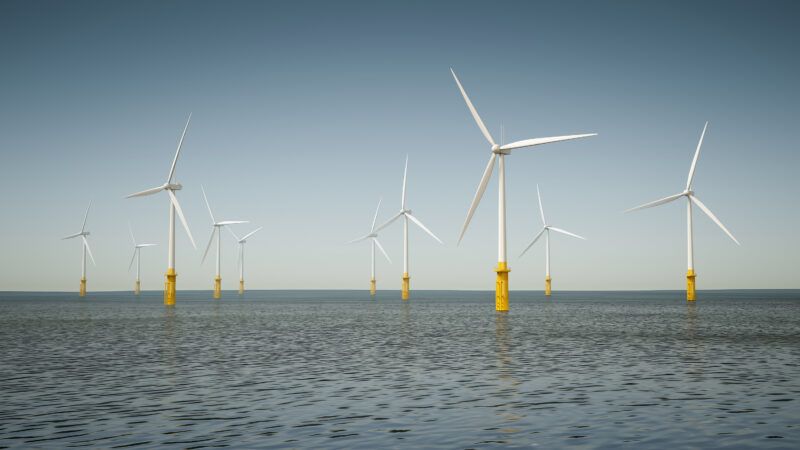17 States Sue Trump Administration for Its Anti-Wind Energy Policy
The lawsuit challenges a Day 1 executive order signed by the president to halt federal leasing for offshore wind energy projects.

President Donald Trump has said that he will go after states that have policies to address climate change or reduce greenhouse gas emissions. On Monday, 17 states and the District of Columbia returned the favor by filing a lawsuit against the Trump administration over its anti-wind energy policies.
Under Trump, who promised to implement a policy "where no windmills are being built," the federal government has bolstered fossil fuel projects and deterred renewable energy development. The Bureau of Ocean Energy Management recently halted the construction of an offshore wind project that would power 500,000 homes, whose federal lease was approved in 2017 under the first Trump administration. The Environmental Protection Agency has also rescinded Clean Air Act permits for a New Jersey offshore wind project, which had "devoted extensive time and resources to follow a complex, multi-year permitting process, resulting in final project approvals that conform with the law," according to the project's developer.
The lawsuit, filed in the United States District Court for the District of Massachusetts, challenges a Day 1 executive order signed by the president to indefinitely halt federal leasing for offshore wind energy projects. The order was signed the same day that Trump declared a national energy emergency to address America's "insufficient energy production." The states are asking a federal judge to "declare the order unlawful and stop federal agencies from implementing it," reports the Associated Press.
Trump's wind energy executive order "has stopped most wind-energy development in its tracks" and was issued with no "reasoned explanation," according to the lawsuit. California Attorney General Rob Bonta, a plaintiff in the suit, called Trump's wind energy directive "illegal." New York Attorney General Letitia James, the lead plaintiff, said the Trump administration "is devastating one of our nation's fastest-growing sources of clean, reliable, and affordable energy."
A president shunning certain energy sources is not new. Former President Barack Obama halted coal mine leasing on federal lands. Former President Joe Biden placed a moratorium on new oil and gas leases on public lands, which was challenged by 14 Republican states.
But just as the president has targeted renewables, the states suing the Trump administration have targeted fossil fuel projects through clean energy mandates. For instance, New York law requires the state to obtain 70 percent of its electricity from renewable sources by 2030 and 100 percent from nonemitting sources by 2040. In California, all retail electricity must come exclusively from zero-carbon resources by 2045. Massachusetts has set a goal to reach net-zero carbon emissions by 2050 and procure 5,600 megawatts of offshore wind by June 30, 2027.
Government mandates that require a share of a state's energy to come from specific sources drive up costs for consumers and distort the market by subsidizing favored energy technologies. A study from the University of Chicago found that, as of 2019, consumers in states with these mandates had paid $125.2 billion more for electricity since 2012. The cost of reducing carbon dioxide (CO2) emissions under these structures, meanwhile, can top $460 per metric ton of CO2. Natural regeneration, like tree plantings, can reduce CO2 emissions for $23 per ton.
ClearView Energy Partners Managing Director Timothy Fox "said that he expected the lawsuit to face an uphill climb in convincing the court to block the executive order," according to The New York Times. To Fox, the "'best-case scenario' for the offshore wind industry is that facilities that are already operating, or far along in development, may continue without opposition from the Trump administration," reports the Times.
Regardless of who wins the lawsuit, Trump's actions and the policies implemented by these states have shown that when the government picks energy favorites, consumers suffer.


Show Comments (54)